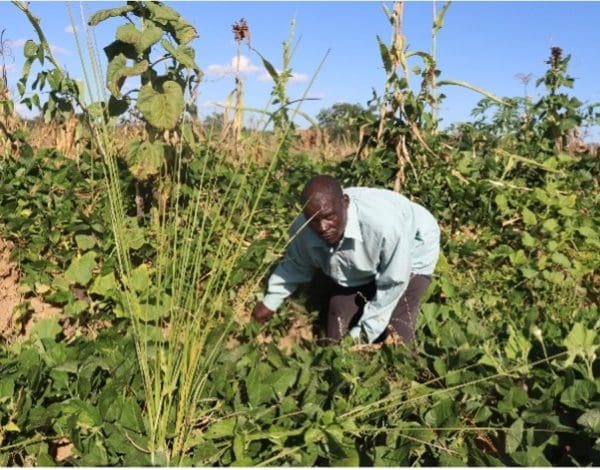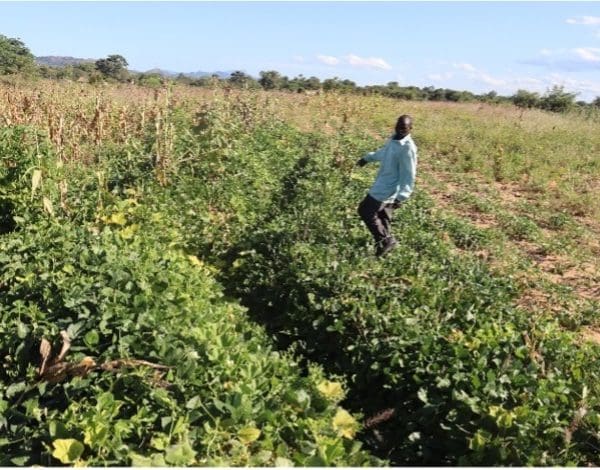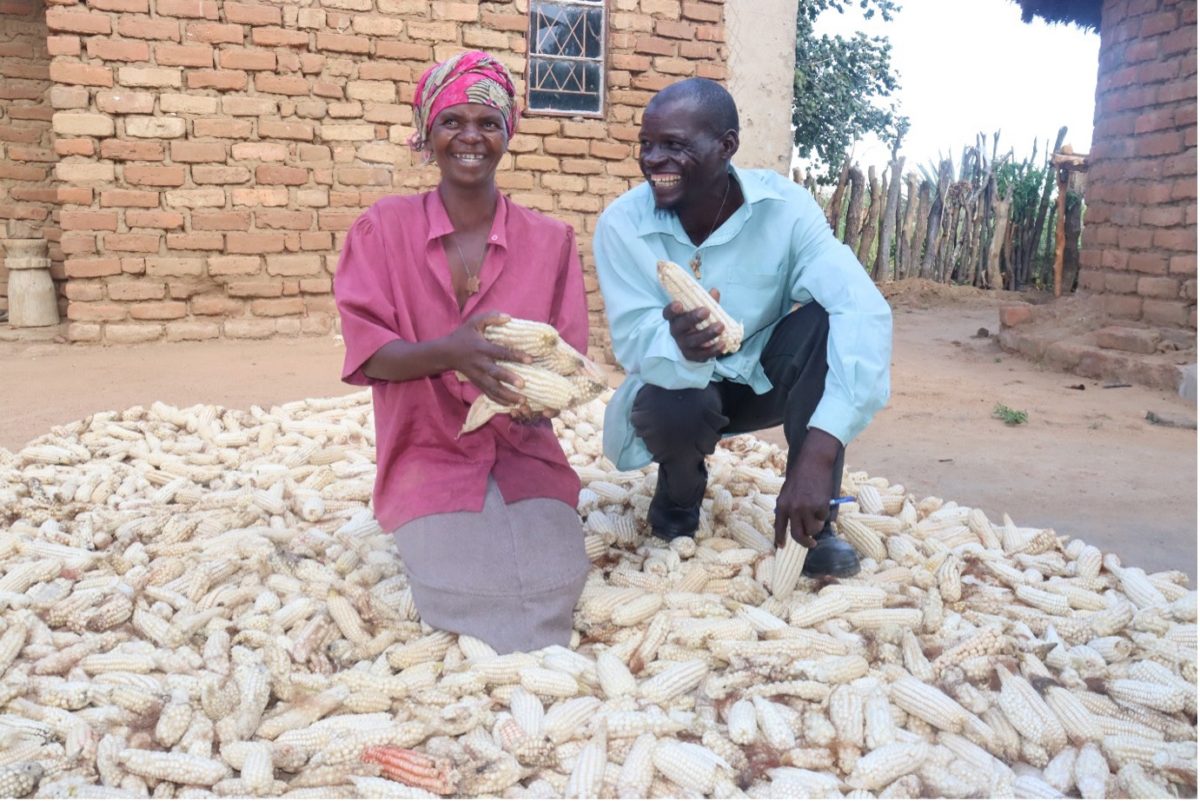Resilience Design: A Key Component To Sustainable Household Food And Income Security.
Cluster E in Ward 13, Chivi district, Masvingo Province, is one of the most drought-prone areas in the eastern region of Zimbabwe. The area is characterized by poor soils, erratic rainfall, and persistent livestock diseases. This has resulted in poor agricultural production and food insecurity among some households. As the community identified these and other challenges, through USAID Takunda facilitated the community visioning process that assisted cluster E to identify common challenges affecting their localiy and the possible mitigation measures.
Written By: KAIZER MAKOPE
As a result, cluster E prioritized climate-resilient livelihood activities, to boost food and income security., Furthermore, the facilitation process presented a platform where Takunda introduced ‘resilience design’, an intervention aimed towards harvesting water, increasing soil fertility, and encouraging biodiversity leading to increased income sources.

NOMORE GWENDA (Host Farmer) harvesting cow Pease which he planted in the contour ridge. © Kaizer Makope / CARE
NOMORE GWENDA (51) and his wife, ANGELINE KUZIPA (40) are communal farmers and face these challenges every day with their six children. Over the years, the family struggled to raise enough money to send the children to school. Additionally, the family had failed to produce adequate nutritious food, which is mainly needed by children, especially those under 5 years. At his wit’s end, Nomore volunteered his land and time to be a host farmer for resilience design – after all, his portion of land had proved to be unproductive. The apportioned section of his land was fashioned into a demonstration site as a Farmer Field Business School (FFBS) where peer farmers convene and share knowledge on agriculture and related practices. Through the FFBS at Nomore’s homestead, farmers learned how to harvest underground water – a technique that would prove fruitful to Nomore’s harvest. During planting season, he inter-cropped maize, sorghum, pearl millet, legumes, nuts, and butternuts. He then proceeded to plant fruit trees like the pawpaw, guava, banana, and avocado trees. He opted for these trees not only to complement food crops, but to get shade at the homestead, and eventually help to preserve moisture underground. Nomore, planted stock feeds for his livestock to cater to the peak hunger period.
On contours, Nomore and Angeline planted cowpeas and have since harvested two buckets of cowpeas and repurposed the leaves as vegetables. Looking forward to selling his produce to get more income, Nomore had this to share, “From this field, I am expecting to harvest more than seven buckets of cowpeas and dried leaves. This means more income for me during the dry season,” as he hopes to sell the excess produce.
Nomore appreciates the journey that Takunda has exposed him to that has resulted in him acquiring deep knowledge and understanding of practicing a lucrative farming method in dry areas. When he was asked, Nomore reviewed he was expecting 12 bags (600kgs) of maize this season, compared to the 200kgs he got the previous year after employing the non-RD planting concept. Furthermore, Nomore is also expecting more than eight bags (400kgs) of pearl millet and had already harvested 6 bags (300kgs) of sorghum by the time of the interview.
When asked if he had noticed some food security improvements, Nomore had this to say, “Looking at the amount of food that I have in stock so far, I am confident that I am not going to buy any food for consumption throughout the year.”
As this achievement is not enough for the family, Nomore’s wife Angeline, is participating in village savings and loans (VSLA). As a result, the family was able to borrow money from the VSLA group and started a poultry project in which Sasso. The couple uses small grains to feed the chickens which are less expensive. Furthermore, Nomore’s family is getting some income from livestock activities mainly goats and indigenous chicken. In 2023, they earned USD$105-00 within three months from selling goats and USD$24-00 from indigenous chicken.at USD$35-00 and USD$6-00 respectively.
“We slaughtered agoat for family consumption. We are planning to continue doing this at least two times per year so that our children get some meat. As for the indigenous chicken, we do not spend two months without slaughtering,” added Nomore.
The household is taking advantage of local functions and individuals who come to buy chicken and goats at their home and others. Also, Takunda activities help a long way in motivating them to remain practicing resilience design.
However, Nomore’s journey could not come without any challenges. He asserted that land disputes arose in the community which were later solved amicably. Also, the germination of ground nuts and sorghum was poor which reduced the plant’s expected population. In addition to this, Nomore cited that his fruit trees struggle due to livestock since he does not have a fence to protect his field. He is also facing market challenges to sell his dried cowpea leaves.
In the future, Nomore expects to establish an irrigation facility which he views has an opportunity to produce all year round. He has emphasized that he does not envision himself being formally employed, hence there is no need for him to look for any job given the knowledge gained from Takunda, that has contributed inboosting his household income through various initiatives. Nomore sees himself beingat an advanced stage of establishing a backyard garden, and he is looking forward to growing nutritious vegetables. Nomore is planning to grow a lot of stock feeds as a way to sustain his livestock during the dry season.

